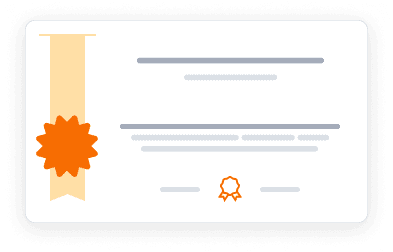Master R programming for data manipulation and visualization in health research using tidyverse and ggplot2.
Master R programming for data manipulation and visualization in health research using tidyverse and ggplot2.
This course cannot be purchased separately - to access the complete learning experience, graded assignments, and earn certificates, you'll need to enroll in the full Data Science for Health Research Specialization program. You can audit this specific course for free to explore the content, which includes access to course materials and lectures. This allows you to learn at your own pace without any financial commitment.
Instructors:
English
What you'll learn
Navigate R and RStudio environment effectively
Format and manipulate data using tidyverse functions
Create professional visualizations with ggplot2
Develop structured workflows for data analysis
Share results through RMarkdown reports
Skills you'll gain
This course includes:
6.57 Hours PreRecorded video
13 assignments
Access on Mobile, Tablet, Desktop
FullTime access
Shareable certificate
Closed caption
Get a Completion Certificate
Share your certificate with prospective employers and your professional network on LinkedIn.
Created by
Provided by

Top companies offer this course to their employees
Top companies provide this course to enhance their employees' skills, ensuring they excel in handling complex projects and drive organizational success.





There are 4 modules in this course
This comprehensive course introduces learners to the R statistical environment, focusing on data manipulation and visualization for health research. Students begin with R and RStudio basics, then progress through data wrangling using tidyverse packages. The curriculum covers essential skills including data filtering, grouping, summarizing, and pivoting. Advanced topics include creating publication-ready plots with ggplot2 and establishing efficient project workflows. All concepts are taught through multiple modalities including lectures, guided coding practice, and independent exercises using real-world health data.
Become knowledgeable about and conversant in the R environment
Module 1 · 3 Hours to complete
Format and manipulate data within R into suitable formats
Module 2 · 6 Hours to complete
Develop intuition for doing exploratory data analysis
Module 3 · 6 Hours to complete
Develop a workflow in R
Module 4 · 2 Hours to complete
Fee Structure
Instructor
Associate Professor
Phil is a faculty member and biostatistician in the Department of Biostatistics at the University of Michigan, Ann Arbor, USA. He studied Mathematics and Political Science at Calvin College (now Calvin University) in Grand Rapids, MI and received his MS and PhD in Biostatistics in 2009 and 2012, respectively, from the University of Michigan. He loves teaching biostatistics and R and collaborating with physicians and scientists, especially in research related to extracorporeal membrane oxygenation (ECMO) and oncology. When he’s not coding or doing statistics, you will often find him playing board games with his family and friends.
Testimonials
Testimonials and success stories are a testament to the quality of this program and its impact on your career and learning journey. Be the first to help others make an informed decision by sharing your review of the course.
Frequently asked questions
Below are some of the most commonly asked questions about this course. We aim to provide clear and concise answers to help you better understand the course content, structure, and any other relevant information. If you have any additional questions or if your question is not listed here, please don't hesitate to reach out to our support team for further assistance.



